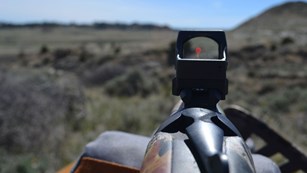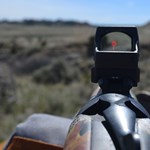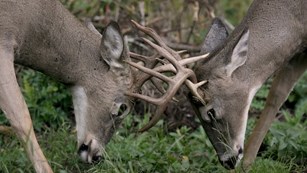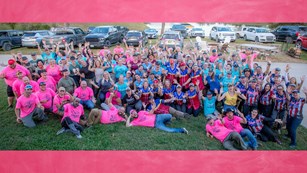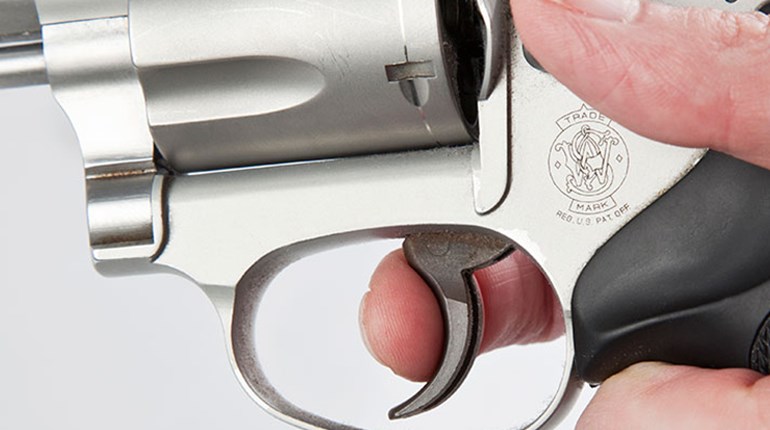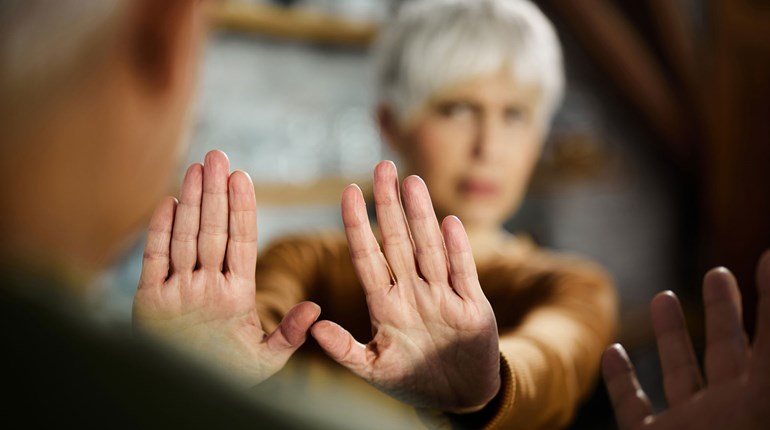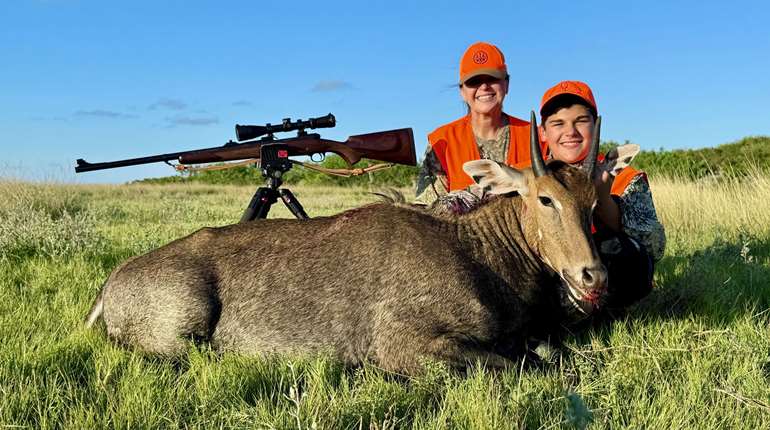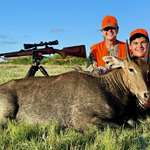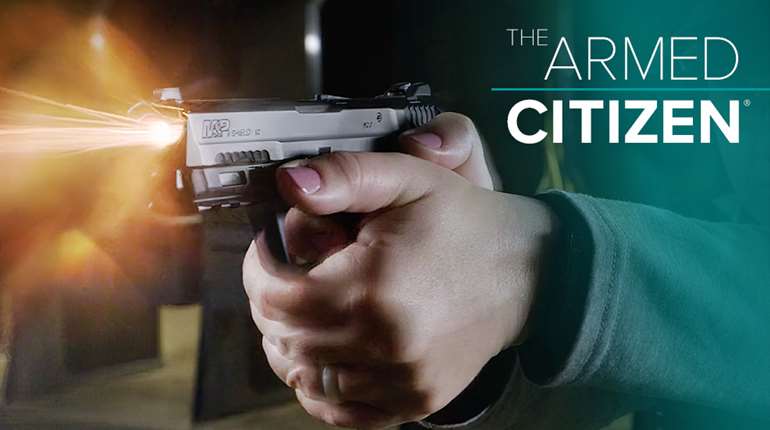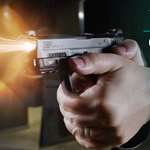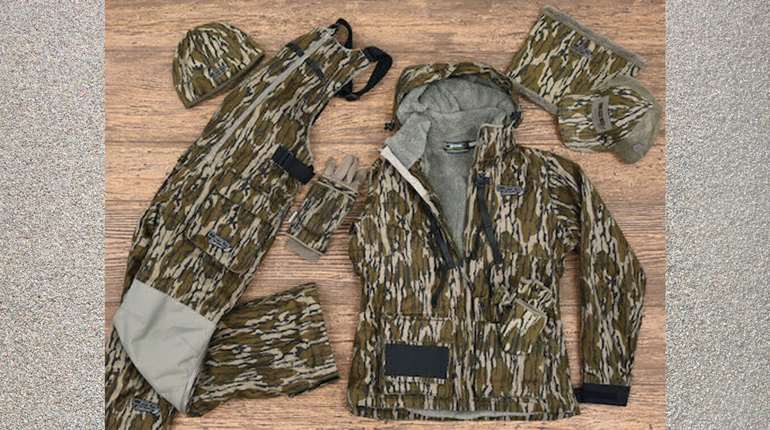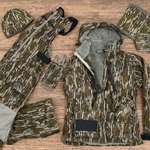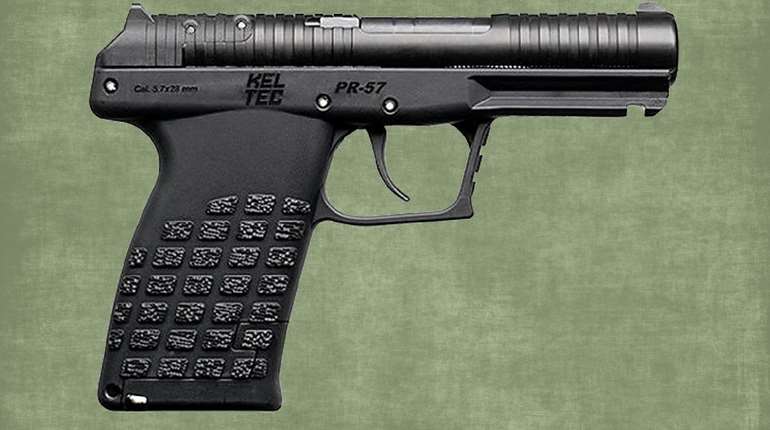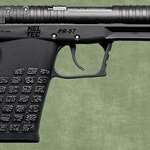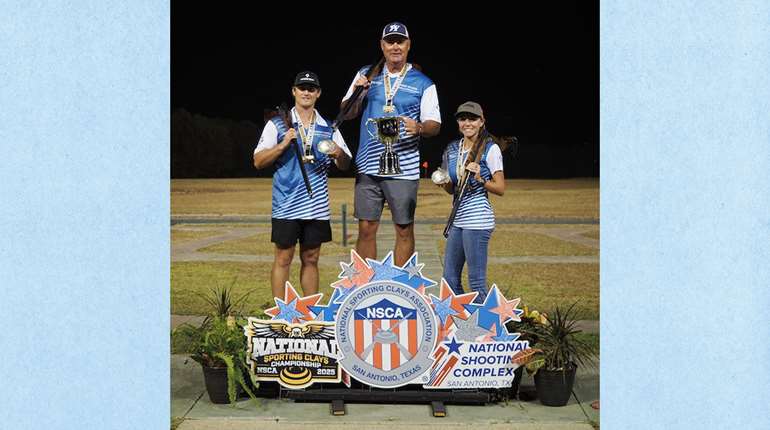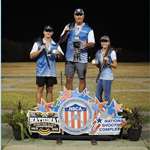
There’s a very simple physiological concept that applies to shooting as well as many other things in life: If you’re trying to hold something still, you should focus on it. Your body will impart the least amount of movement possible onto whatever you’re focusing.
As an example, imagine you get up, walk across the room holding your coffee mug and have someone pour you a refill so you can go settle back into your cozy chair or booth or wherever you were sitting. But imagine they pour the mug full to the very tippy top, and now you’ve got to carefully carry that full mug across the room without spilling it and burning your hands. How are you going to proceed? Are you going to move quickly, or slowly? Are you going to wave to someone or use your other hand for something else while you’re walking? Most importantly, where are you going to be looking the entire time you’re moving?
That’s right—you’ll move slowly and deliberately, focusing your energy on the task at hand, and your eyes will be glued to that mug. You won’t be looking up at the table you’re headed to, and you won’t be paying attention to most of what you’ll pass on the way unless something is getting close enough to you to present a potential problem. You’ll be focusing on the thing you want to hold as still as possible: the coffee mug.
Believe it or not, this has a lot to do with good shooting. For the most accurate shot possible, you must apply your visual focus to the right place or on the right thing. The tricky part is the right thing is totally different depending on what you’re shooting and whether or not you want to be moving or remaining still. So what’s the “coffee mug” to look at in each type of shooting?
Scoped Rifles and Pistols With Red-Dots
If you’re shooting a rifle topped with a scope or a handgun (or shotgun, as in the turkey-hunting variety) equipped with a red-dot optic, you want the gun as still as possible at the moment you move the trigger. Your target might be moving or at least has the potential to move at any moment, which tends to draw your eye, but looking at the target is a mistake. In this situation, the “cup of coffee,” or the thing you want to keep as still as possible, is the scope’s reticle or the red dot inside the optic. If that thing is moving around, your point of impact is going to be moving around, too. So in order to minimize movement, you must apply your focus to the reticle or the red dot.
Do not look at the target—look only at the reticle or the dot, and superimpose it on top of the target, which should be sort of blurry and out of focus in the background. You’ll still see the target, but do not look at it and definitely do not focus on it.
Iron-Sighted Pistols
When shooting a handgun with iron sights, the same principle applies: You don’t want the gun to move as you squeeze the trigger, because if the sights move, the point of impact moves. In this case, you don’t have a scope reticle or a red dot to focus on, but what you do have is a front sight. This is your primary aiming device, and you must apply that coffee-mug level of focus on it in order to keep it as still as possible.
A common refrain among pistol shooters, particularly those who are still learning or those who are coaching others, is “front sight, press.” It’s a reminder to look at your front sight while you let the target blur out behind it before you squeeze the trigger. Trying to switch your focus from the target to the front sight and back again will only confuse your brain—imagine looking from the coffee mug to the friend waiting at your table, and back, and back again. You’d spill the coffee after a couple of glances because your brain is splitting its focus and getting distracted from its primary goal: Keeping the thing in front of your face as still as possible.
Shotguns
Now to throw a wrench in the works: The coffee mug analogy works in shotgun shooting (wing-shooting), too, but in the exact opposite way. Again, your body will keep the thing you look at as still as it possibly can. In rifle and pistol shooting, keeping the gun still is a good thing. When shooting moving targets with a shotgun, however, you need the gun to be moving at all times at the same speed at which the target is moving. You’re swinging with the target, and if the gun stops moving while the target keeps going, you’ll miss behind it every time.
New shotgun shooters (and even some of us who’ve been doing this long enough to know better) tend to look at the bead on the front of their shotgun the same way they’d look at a rifle’s reticle, a pistol’s front sight or a full coffee mug. After all, it’s much closer to their face than the target is, so the eye is drawn there. And since wing-shooting requires you to lead a target—point the gun somewhere ahead of the moving target, not directly on it—many shooters get nervous and want to check their lead by looking at the bead, then the target, then back to the bead.
The trouble is that if you look at the bead, just like when you focus on a pistol’s front sight or a full mug of coffee, your brain will instruct your body to hold that thing as still as possible. And in this case, that means you will stop swinging the gun while the target continues to fly past it. You’ll miss every time.
So, keeping the cup-of-coffee analogy in mind, you need all your focus to be on the target when you’re swinging a shotgun. The target is moving, and you need to be moving right along with it if you hope to hit it. If you focus on the bead, you’ll stop moving the gun. While that works perfectly with rifles, pistols and aimed shotguns, it’s disastrous in wing-shooting.
